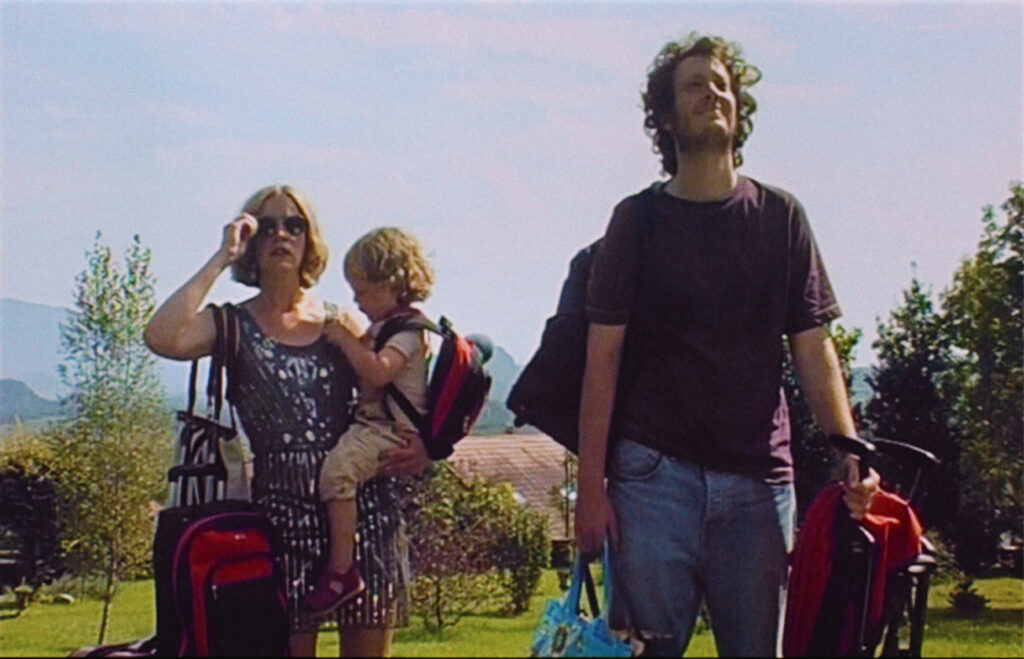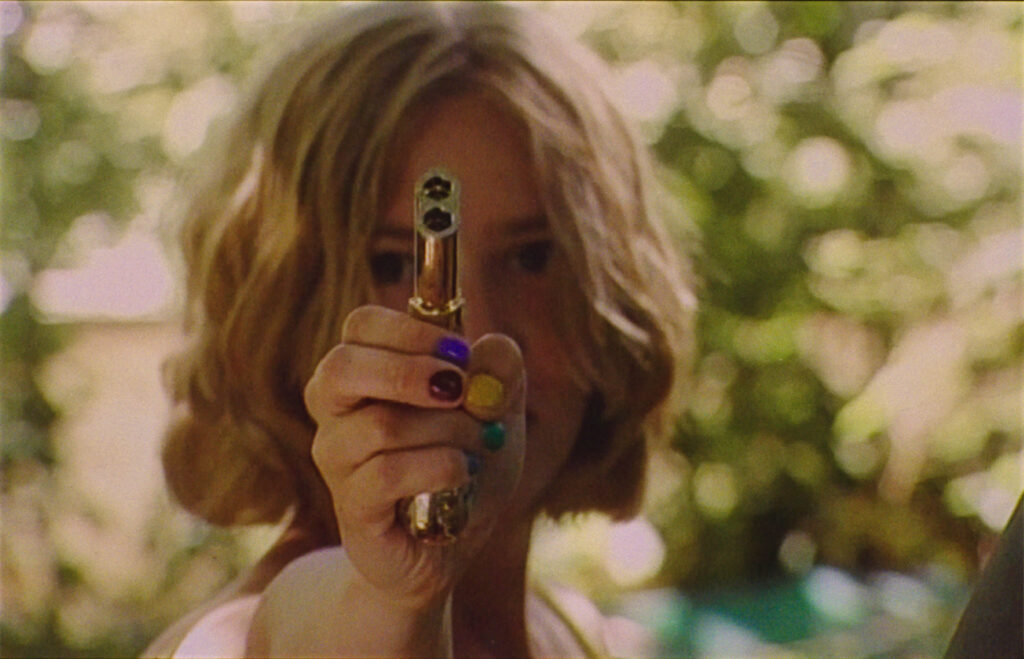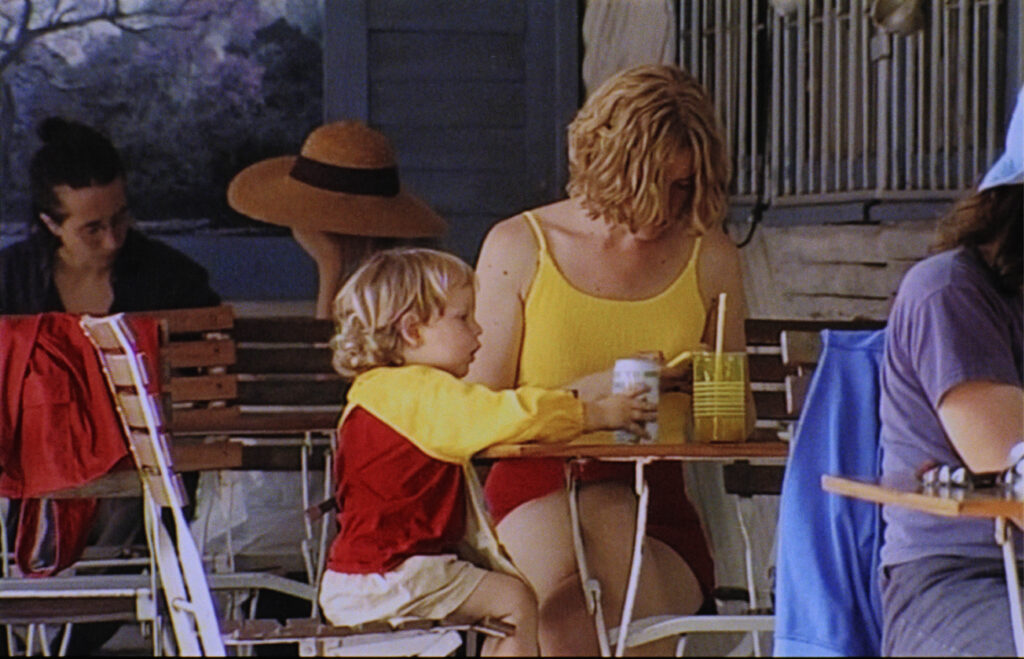Savina Petkova in conversation with Sara Summa about her film Arthur&Diana
This is your second feature and it is quite different from “The Last To See Them” which premiered at the Berlinale in 2019. They are different in terms of tone, structure, aesthetics, characters, but I’m curious what you’d say are the similarities between them.
As different as they are, I feel like there are things that inhabit me. First off, probably something like a general tension between life and death … But really it’s not so much topics I’m interested in, as more aesthetic tropes—the idea of contrast, or the relation to reality. And these are some of the elements that maybe, you know, come again and again, through my films. That first feature is also in a way this kind of strange experiment with reality, because it’s loosely based on the events that inspired Truman Capote to write “In cold blood”. And so I went back to his archives and research, reconstructing the real day that those four people experienced back in 1959 in Kansas. That’s the real element in there. And then, of course, there’s a sort of translation into a whole different socio-cultural context and reality in southern Italy, nowadays. This then is an act of fictionalising: what is first real material, turns fiction, then is, again, made real. There was no such real event in 2012 as the intertitle suggests, but it was real in 1959 in Kansas. It was also made real through the work with non-professional actors from Basilicata, who impersonated these characters and gave me a lot, as I wasn’t describing my own reality. So it’s again this experiment in sort of, you know, breathing reality and transposing it into fiction. But then getting back to reality, or at least there are these different steps that are so very intertwined.

So we have here a road movie of some sort, but I’m wondering what was the film’s journey from beginning to here.
I somehow always start a new project based on an image that appears in my head, one which I feel deserves more digging into and more exploration. And when I feel like that about an image, I think, Okay, this is probably the beginning of a film, or at least a film project. It doesn’t mean that the image, as it is, will be in the film, or that it’s the first image of the film or whatever, but it is an inspiration for a new movie. And, yeah, somehow, I just had this image of my brother and myself in action, propelled forward; it was something full of movement, almost blurry as a result! I don’t remember the image, per se, very clearly right now anymore—now that so many more images have come on top of that. But I could already tell in that image that it was the two of us, but it wasn’t the two of us, it was characters instead. And that there was something very dynamic about it, an elan vital towards something.
I just had this image of my brother and myself in action, propelled forward; it was something full of movement, almost blurry as a result..
And this is your second film within the film school framework?
Yes, suddenly there was an opportunity to apply for a little bit of funding at my film school. I thought, Okay, this can be a film that can be made with little money, so I sort of had to write a film in two weeks! I produced a 25 page long treatment to begin with, which I could actually come up with in just two weeks, because I knew these characters so well. What really interests me is this contrast between something very real—three people with their built dynamics between them—but actually thrown into a purely fictional environment and story. Then we get to see what can be born out of this contrast. I’m always interested in working with contrast, whether it’s aesthetically or, you know, in terms of the content.
How did this initial stage translate to the script and shooting stage?
My intention originally was not to have a script, and to just work with this treatment, and, throughout rehearsals, to find more and dig into these characters and define them a bit better. Of course, a lot of it comes from ourselves, but it’s a caricature of ourselves or whatever you want to call it. It’s sort of an exalted version of ourselves, so to speak. I still wanted to look into that and then look into the ways we talk and we do things. And I wanted
to just have this canvas as a base from which to start shooting. In the end, I did have to write a full script, in another few weeks or something. But, the fact that I was so limited in terms of writing time, managed to still keep it very vital, very dynamic, I think. It’s a sort of very immediate, a bit raw, kind of writing. And of course, even though we had a script, a lot happened during shooting, and even preparing the shoot: you rewrite the film many times then, but just not on paper.

It’s not just you and your brother, you also have your son as a protagonist!
Of course, there is also the real element of my son Lupo in the middle of all that, whom I knew from the start had to be part of this. I have a very, very symbiotic relationship with the people I love and I need to involve them in what I do. I needed to somehow include the reality of my situation, in the fictional world that I was creating. Shooting is such an overwhelming experience, and you’re completely separated from the rest of your life for a very long time. But that was just not possible with a two year old at that point. So it came from sort of necessity, but also, content wise, the film deals with past, future, and present. It has a lot to do with childhood, whether ours or Lupo’s in fact. And with parenthood as well, more specifically motherhood, but also family in general. And all these things are somehow summed up in these three characters being thrown together in that confined space of a car.
I’m curious to hear more about the way you conceptualise and employ contrast in this film, especially on the reality-fiction spectrum.
I guess contrast is what gets me started, or at least intellectually, it’s what tickles my curiosity and fantasy. Putting together elements that are in a way not meant to go together, often shows you how life finds its way through everything. Within the context of “Arthur & Diana”, all the other characters are actors (professional or not), at least in the way that they’re not at all impersonating themselves, unlike us three. But they’re all friends or family friends, or neighbours of mine, so the whole atmosphere on set was very much like a big family. That creates a space within which life can happen. Even though it’s fiction, by the end of the day, it draws from life. Not least of all from the life that happens in the act of shooting. Somehow you have all these ingredients you prepare to begin with, and then you throw them together, and they all come alive by rubbing against each other. Or at least that’s the hope.
How would you describe your relationship to autofiction and semi-autobiography in that regard?
The experiment is a bit like a piece of performative art, because it is very close to us, obviously—to me especially, but also to Robin and my son Lupo, because he’s not really acting. I mean, a two year old is not acting— even though he was very aware of the process and reacting to it. But for us grown-ups as well, things always come from you as an actor.
I mean, when you’re an actor even in a fiction that has nothing biographical to it, you always reach within yourself to bring something out. And it’s always personal in a lot of ways. In this case, it’s mainly the characters that are very much, you know, based on ourselves, but sort of going further than ourselves and creating this sort of comedic version of ourselves almost. But in terms of storyline, in the film as a whole, most of it is invented. There is of course one theme, which is close to us, as my dad is no longer with us. But it was not about picturing my life or anything like that, it was more about seeing what it does to throw myself, ourselves, in front of this eye that is the camera, together. To see what happens to that real relationship in front of a camera, yet within a fictional framework.

The film is in many ways ahistorical—flip phones, smartphones, but little context— but its aesthetic is very singular. How did you arrive at this look?
I guess one can say the film has a nostalgic aesthetic in a way, but then again not really. We shot with three different cameras, one being a film camera, 16mm, and two being old video cameras. Then we printed the entire movie on film, at the end of the editing process and worked with the colourist on the printed images. It was a very complicated process, but it leaves you with a very special image, it’s quite vintage in a way. But we were also very careful to break that look within the image while shooting, by using more modern items, some uglier objects, plastic bags etc. So, historically speaking, it’s an undefined time, but at the same time recognisable as close to ours, and I think this is how I work in general, this is my relation to reality. I think it’s more of a poetic reality, which however also reflects reality and its dilemmas. Why else would you make films, you know, if you’re not talking about reality in some way?
And what about the decision to switch between formats?
Shooting on film is extremely challenging. And with the way we were shooting and the needs we had, it would not have been possible for every scene. So we did some research into other possible formats. My DoP [Faraz Fesharaki] and I, experimented with bigger TV video cameras, then some smaller ones, and the mini DV format which we used for inside the car. So, video became something that we slowly accepted as an aesthetic: not only because it allows for a certain freedom in the act of shooting, but also what it is that we actually like about such an image started becoming clear, and it felt right. It’s not beautiful in the way one is used to defining beauty nowadays, and that’s probably also what we were looking for. Then we decided to integrate 16mm footage anyway and mix it up, without a dogmatic rule of when to feature what format. We wanted to keep it eclectic, as well as moving and dynamic. And sometimes it was for technical reasons because, for example, the 16 mm camera was the only one that actually had a specific type of lens, like a zoom lens.
I think this look is sort of a reflection of my inner self! I mean, you know, it’s always one’s own aesthetic that shines through the end result—it’s mine as much as it belongs to all the people on the creative team, who, you know, also understood the aesthetic concept of the film, and just put a lot of themselves in it as well!
Music plays a very special role here, both for the characters and for the film itself.
I always work with music from very early on in the process, also because my composer is my husband, who is also the first reader of my scripts. I don’t like typical score music, I’m more drawn to music that has a function in the narration and is a lot of the time incorporated in the scenes. So most of the scenes were conceived of with music to begin with. But sometimes the music still had to happen quite fast and last minute. Like, for example, the last song, I wrote the lyrics, and Ben [Rössler] composed it something like the day before shooting, so that we had to learn it real fast! So it was a proper a challenge. We basically wrote it while shooting in order to be able to shoot it. Yet we had had in mind the musical vibe that the scene was going to have from the very beginning.
So we can say that the film is about the movement of things, times, people?
That’s a nice way of putting it! I’d say it’s about freedom, whether it’s freedom from or freedom within a family dynamic, I mean, within, you know, one’s life. I think Diana is a character that, in a way, strives to be free, in spite of all the constraints that life offers. I like to think of the film as one that breathes freedom, also in its form and language. I was definitely hoping to make a film that was joyful. It gave me energy when we were also all going through very difficult times worldwide during the covid period. So I definitely wanted to put life, joy and dynamism out there, as well as freedom, the opposite of the restrictive times we were somehow experiencing. And the whole project of course has to do with love—not least of all love for cinema!